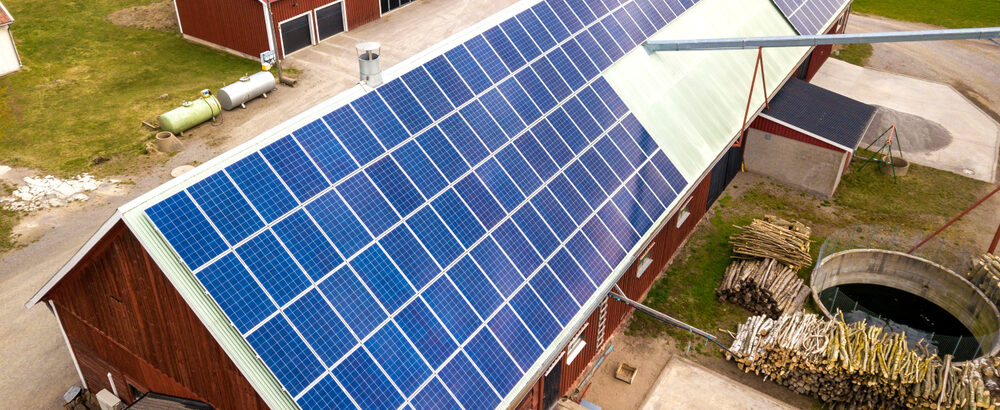The Inflation Reduction Act (IRA) of 2022 has brought about significant changes in the realm of clean energy incentives. Among the beneficiaries of this legislation are non-profit organizations such as churches, which now have access to enhanced tax credits for investing in renewable energy infrastructure. In this blog post, we will explore the favorable changes brought by the IRA for non-profits and how these changes incentivize the adoption of solar energy. We will also highlight Simple Solar as the go-to choice for non-profit organizations in Arizona looking to install solar systems and maximize these newly enacted and increased credits and newly enacted direct rebates.
Expanded Federal Tax Credit Accessibility
Under the provisions of the IRA, non-profit organizations, state, local, and Tribal governments, and other tax-exempt entities now can receive certain tax credits as direct payments (rebates) from the Internal Revenue Service (IRS). This significant change streamlines the process for these entities, enabling them to access key incentives for the first time and invest in their local communities.
The IRA has ushered in transformative changes for non-profit organizations, granting them access to tax credits for funding their solar projects like never before. Previously, these organizations faced significant obstacles when attempting to access tax credits for renewable energy initiatives. Due to their non-profit status and the absence of taxable income, they were unable to benefit from such credits. However, the IRA has introduced a mechanism that revolutionizes the landscape for non-profits seeking financial support.
One of the most remarkable improvements brought about by the IRA is the ability for non-profit organizations, including churches, to receive the full 30% tax credit for their renewable energy projects. In the past, without taxable income, non-profits could not apply for the tax credit and, consequently, were unable to enjoy any of its benefits. However, thanks to the IRA, non-profits can now directly monetize the tax credit, receiving the entire 30% credit as a direct payment or rebate. This exciting development allows non-profits to overcome financial barriers and unlock their potential to invest in clean energy initiatives.
Furthermore, the IRA doesn’t stop there. It recognizes the importance of supporting domestic manufacturing and incentivizing the use of solar systems with components made in America. Non-profit organizations can benefit from an additional 10% increase in the tax credit if their installed systems meet domestic minimum requirements. This means that by opting for locally sourced solar components, non-profits can claim an impressive 40% of the total project cost as a tax credit, which is rebated to them as a direct payment from the IRS. This additional incentive not only fosters the growth of the domestic solar industry but also ensures that non-profits reap the maximum financial rewards.
These changes introduced by the IRA empower non-profit organizations to embrace renewable energy and contribute to a more sustainable future while enjoying the full benefits of the tax credit. The increased tax credit from 22% to 30% significantly reduces the cost burden for non-profits interested in adopting clean energy solutions. Importantly, the IRA has extended the availability of these tax credits until 2033, providing non-profits with long-term financial advantages when planning their renewable energy projects.
Expanded Federal Tax Credit Accessibility
Under the provisions of the IRA, non-profit organizations, state, local, and Tribal governments, and other tax-exempt entities now can receive certain tax credits as direct payments (rebates) from the Internal Revenue Service (IRS). This significant change streamlines the process for these entities, enabling them to access key incentives for the first time and invest in their local communities.
The IRA has ushered in transformative changes for non-profit organizations, granting them access to tax credits for funding their solar projects like never before. Previously, these organizations faced significant obstacles when attempting to access tax credits for renewable energy initiatives. Due to their non-profit status and the absence of taxable income, they were unable to benefit from such credits. However, the IRA has introduced a mechanism that revolutionizes the landscape for non-profits seeking financial support.
One of the most remarkable improvements brought about by the IRA is the ability for non-profit organizations, including churches, to receive the full 30% tax credit for their renewable energy projects. In the past, without taxable income, non-profits could not apply for the tax credit and, consequently, were unable to enjoy any of its benefits. However, thanks to the IRA, non-profits can now directly monetize the tax credit, receiving the entire 30% credit as a direct payment or rebate. This exciting development allows non-profits to overcome financial barriers and unlock their potential to invest in clean energy initiatives.
Furthermore, the IRA doesn’t stop there. It recognizes the importance of supporting domestic manufacturing and incentivizing the use of solar systems with components made in America. Non-profit organizations can benefit from an additional 10% increase in the tax credit if their installed systems meet domestic minimum requirements. This means that by opting for locally sourced solar components, non-profits can claim an impressive 40% of the total project cost as a tax credit, which is rebated to them as a direct payment from the IRS. This additional incentive not only fosters the growth of the domestic solar industry but also ensures that non-profits reap the maximum financial rewards.
These changes introduced by the IRA empower non-profit organizations to embrace renewable energy and contribute to a more sustainable future while enjoying the full benefits of the tax credit. The increased tax credit from 22% to 30% significantly reduces the cost burden for non-profits interested in adopting clean energy solutions. Importantly, the IRA has extended the availability of these tax credits until 2033, providing non-profits with long-term financial advantages when planning their renewable energy projects.
Why Choose Simple Solar for Non-Profit Solar Installations in Arizona
When it comes to solar installations for non-profit organizations in Arizona, Simple Solar shines as the ultimate choice. With a proven track record of serving non-profits, Simple Solar understands their unique needs and delivers tailored solutions. By partnering with Simple Solar, non-profits can fully leverage the benefits offered by the IRA and effortlessly navigate the complexities of claiming tax credits and rebates. Simple Solar’s expertise and dedication to serving non-profit organizations make them the ideal partner for those in Arizona seeking to embrace solar energy and capitalize on the newly enacted and increased tax credits and rebates. With Simple Solar, non-profits can confidently embark on their clean energy journey, creating a significant and positive impact on their communities and the environment.
The IRA has ushered in a new era of opportunities for non-profit organizations to invest in clean energy infrastructure. By allowing non-profits to receive tax credits as direct payments, increasing the credit amount to 30%, and offering an additional 10% credit for using domestic components, the IRA has created a favorable environment for solar adoption. Non-profits can now take advantage of these incentives to reduce costs, increase sustainability, and contribute to their local communities. When it comes to non-profit solar installations in Arizona, Simple Solar emerges as the trusted local expert to guide organizations through the process and help them harness the benefits of the newly enacted and increased credits and rebates. Embrace the power of solar energy and make a positive impact while securing financial advantages for your non-profit organization today!





